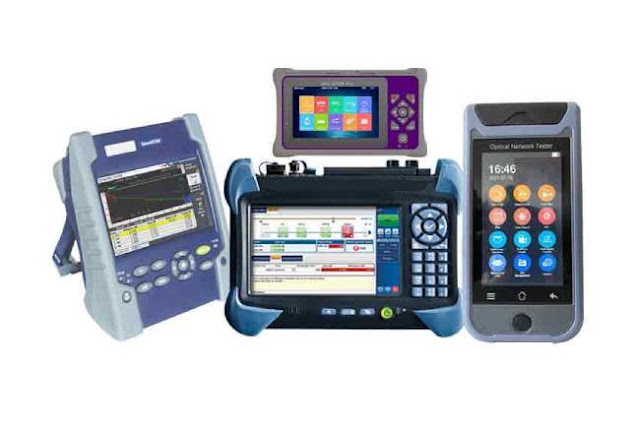A Complete Guide to Choosing the Right OTDR Machine for Fiber Testing
Fiber optic networks are the
backbone of modern communication. Ensuring their performance and integrity is
critical — and that's where an OTDR
machine plays a vital role. Whether you're installing, maintaining, or
troubleshooting fiber networks, investing in the right equipment can make all
the difference.
What is an OTDR Machine?
An OTDR machine
(Optical Time Domain Reflectometer) is an essential testing tool used in the
fiber optic industry. It helps identify faults, splices, and bends in fiber
optic cables by sending light pulses and analyzing the reflections. Technicians
rely on it to provide a graphical representation of the cable route, making
fiber network maintenance more efficient and reliable.
Importance of Accurate Fiber
Testing
Precision is crucial in fiber
optic testing. A reliable fiber OTDR
can detect and locate signal loss or fiber breaks with great accuracy,
minimizing downtime and service disruptions. Unlike basic testers, OTDRs
provide detailed insight into the fiber’s condition, making them ideal for both
new installations and routine maintenance.
Choosing Between Different
OTDR Brands
When selecting an OTDR, brand and
performance matter. For instance, an EXFO
OTDR is known for its durability and user-friendly interface. These
devices are often favored in telecom and data center applications for their
advanced diagnostics.
On the other hand, technicians
looking for industrial-grade tools often choose a Fluke OTDR. Known for precision and robustness, the OTDR tester Fluke lineup includes
models designed for field use, offering quick and accurate measurements even in
tough conditions.
Another trusted name in the
industry is AFL. The AFL OTDR tester
range is ideal for contractors and network providers who require compact yet
powerful testing tools. In particular, the AFL FlexScan OTDR stands out for its handheld size,
auto-testing capabilities, and intuitive reporting features.
Benefits of Using an OTDR
Fiber Tester
A high-quality OTDR fiber tester offers multiple
benefits:
- Fast diagnostics: Quickly pinpoints faults
and connection issues.
- Visual representation: Provides a clear
trace of the fiber path.
- Long-term value: Reduces the cost of
repeated service calls by offering reliable results.
These advantages make OTDRs
invaluable in building resilient and high-performing fiber networks.
Understanding the Role of OTDR
Cable Testers
For those involved in large-scale
network deployments, using an OTDR
cable tester ensures compliance with industry standards. It verifies
link loss, length, and quality, which is essential for certifying newly
installed networks. It’s also useful in auditing existing infrastructure to
identify aging or damaged cables.
Field engineers frequently opt
for portable options like the Fluke OTDR
machine, which combines mobility with high-performance analysis. These
machines are specifically engineered for outdoor environments where quick and
dependable diagnostics are required.
Applications Across Industries
The OTDR tester finds
application in various sectors:
- Telecommunications: Verifies backbone and
distribution fibers.
- Data Centers: Ensures minimal signal loss
across interconnections.
- Broadcast & Defense: Confirms
long-distance fiber continuity and performance.
Each environment requires a
specific kind of OTDR machine,
making it essential to consider your application before purchasing.
Final Thoughts
Investing in the right OTDR machine is crucial for
maintaining the performance and reliability of fiber optic networks. With
options ranging from Fluke OTDR
units to advanced AFL FlexScan OTDR
models, businesses can choose tools that match their technical needs and
budget. Whether you're using a fiber
OTDR for installations or a Fluke
OTDR machine for rugged fieldwork, these tools provide indispensable
data for ensuring optimal fiber health.
For professional-grade solutions, understanding the differences among models like the EXFO OTDR, OTDR fiber tester, and OTDR cable tester will help make informed decisions — leading to better service delivery and fewer disruptions.



Comments
Post a Comment